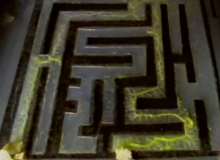Models, Mechanisms and Algorithms

Programmable Material?
Traditionally, computer programming deals with the question of how to arrange a set of primitive operations so that through a series of elementary steps a certain type of final state will be reached. With the occurrence of unconventional computing models like Biocomputing and Hypercomputation as well as advances in other research fields like Nanotechnology or Self-assembly Systems, this paradigm changes drastically. Although the general programming strategy still sounds similar (e.g. for molecular computing we now ask: how to design a set of initial molecules so that a certain type of molecular complexes will be formed), our view on computing is fundamentally challenged.
Firstly, we switch from formally described step-by-step solutions of problems to the creation of initial conditions of complex dynamic systems. The given dynamics of physical or biological entities is used to solve computational tasks and the final results are only achieved by measurement and through correlation to (formal) representational models. Secondly, with this approach the material itself comes back into focus. Functionalism in informatics emphasized the priority of function previous to matter, or of program over realizing stuff. Exploiting the dynamics of natural systems entails that the formal description of physical or biological qualities and its computational qualities are not completely separable. Algorithms and stuff get reconnected. Finally, this view seems to interrelate the formally detached fields of Informatics, Biotechnology and Nanotechnology and allows to obtain a generalized perspective on algorithmic.
More information at:

